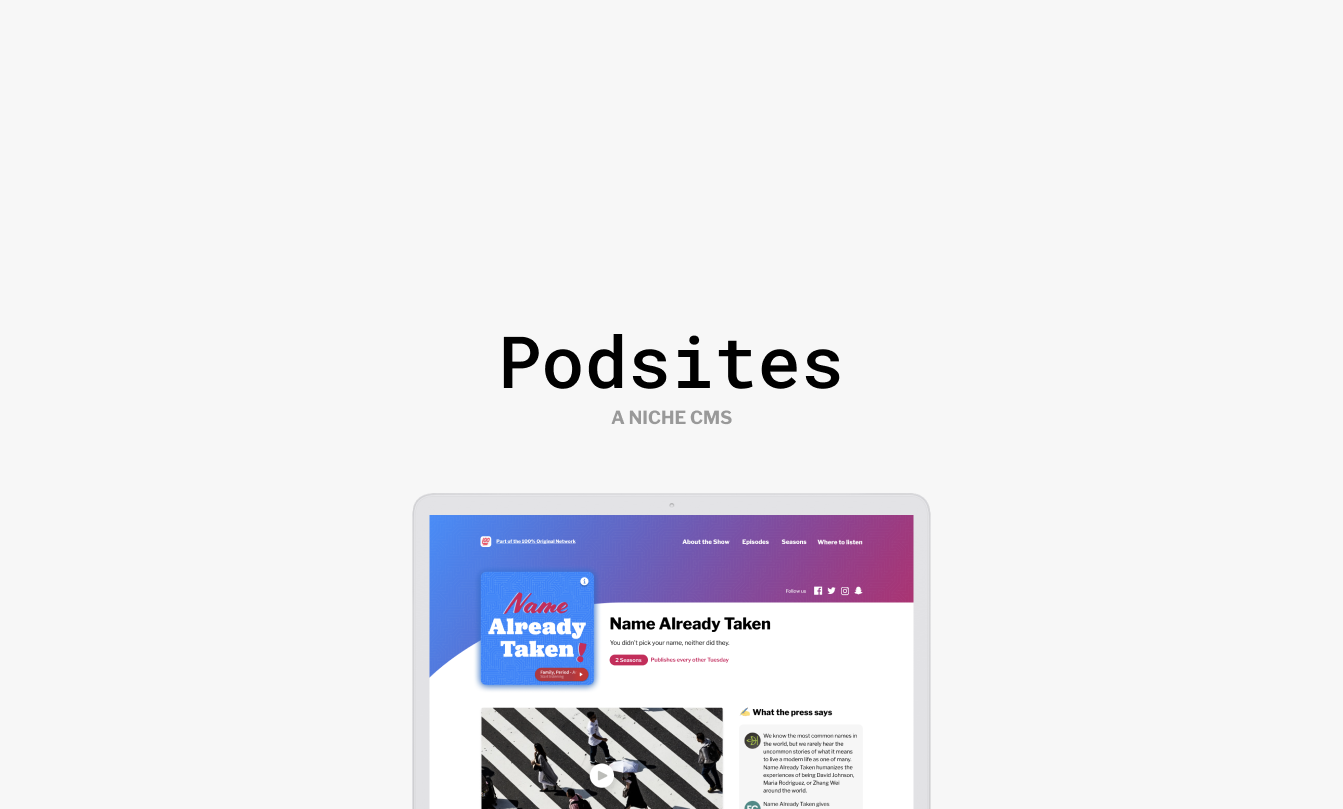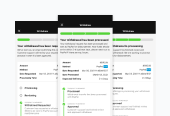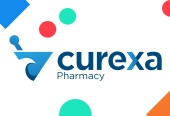

CLIENT
RadioPublic
DISCIPLINES
Product Design
INFO
In an effort to help podcasters level up their web presence, RadioPublic committed to building a niche CMS that ingests a podcasters RSS feed and builds a skeleton of a website to which a podcaster can enhance and customize to better suit their show.
Initial Problem
There are hundreds of thousands of podcasts out there, and outside of the 1% top podcasts many have very little or no web presence to call their own. They cobble it all together with social media, or a disparate host provided landing page with some audio embeds.
The problem to solve was to build something that a podcaster will find invaluable, simple to use and update, that would be beneficial to their growth.
As part of our ethos, helping podcasters grow their shows is part and parcel to what we do, so we have great constant relationships with podcasters, and their problems.
We found an overwhelming majority of podcasters were hacking together their web presence through podcast hosting, social media, and at times a website built on top of squarespace or wordpress.
What problems we found were that podcasters were belaboring the act of getting that web presence all fully aligned. A process that includes hours of recording, editing, publishing, and then promoting was something that even seasoned podcaster who were most times handling it all themselves were struggling to get it all done.
What we know
Radiopublic.coom operates a search catalog and landing page for every show approved in their directory, so we had extensive experience with web behavior as it pertains to podcasts, listening to podcasts on the web, sampling behaviors, and the types of content that would help a podcaster stand out.
We have extensive experience with the technologies behind building a website powered by an RSS feed which gave us the confidence to build out something that could be customized for the podcast.
We knew we could gather a lot of what a podcast would need to get started straight off of their feed, and around the rest we could build features to enhance their presence..
Getting started
The next step was to determine needs from our core potential customers. We worked to set up a survey to determine the right types of podcasts that would fit to stand as an alpha group for us to test some of our builds against.
We asked questions about their needs, their current website (if they had one), about their website hosting providers, what was difficult about maintaining their site, and obviously how much they’d be willing to spend on a website.
Prototyping
We reached back out to our core alpha group with some preliminary designs, to garner feedback, and sentiment.
They gave us lots of useful feedback about everything. If anything its so much that sorting through it all is the biggest challenge. But we were able to land on a core set of features we’d want to build to satisfy their needs.
Things like :
- Synchronization with their feed
- Ability to add testimonials
- Information about the hosts / creators
- Introduction of video trailers
- Ability to post articles / blog
Adding backend
Once we reached a product that our customers were willing to pay for, we started sorting out how the back end could work to help take the load off of us, and allow podcasters to edit and publish their content their way.
We worked on a very simple dashboard / backend to allow for this, giving podcasters simple fields that were pre-populated with data from their RSS feed, and added pieces to allow them to enhance their site.






